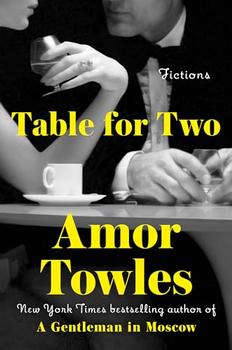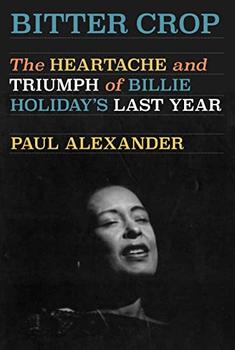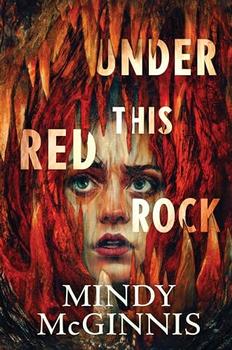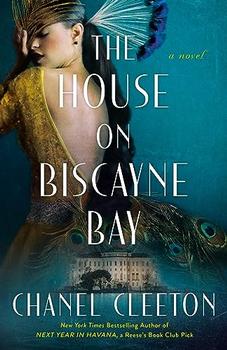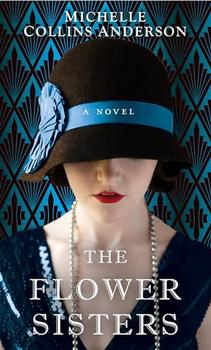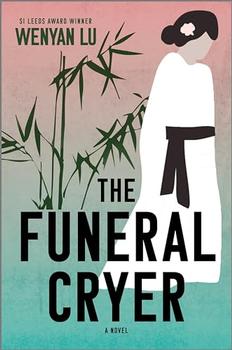Write your own review!
Theresa P. (Arkport, NY)
The Personal Librarian is and was a winner!
Marie Benedict and Victoria Murray have provided a compelling tale of JP Morgan's personal librarian, Belle da Costa Greene. Benedict's novels have all won my admiration, but I commend her for working on this with Murray.
The story flows from Belle, whose most difficult task is to always appear as something she is not. It was a compelling read, beautifully crafted by the authors, who made sure her image and her reality both came through for the reader.
Belle was an incredible woman, doing a magnificent job of building an extensive private collection at Morgan's behest. Morgan demanded her devotion to his library, but often to him as well. Her success was all the more magnificent in that she was female, single, raised in a poor family while working with the richest in society, and hiding a secret--her race. Her failure to comport herself in a manner acceptable to Morgan would have cost her position. Discovery of her secret in any of her social interactions would also have consequences. Belle's vibrant personality sometimes made those steps a challenge.
Belle managed to become one of the most admired women of her time, all the while having to play the part that kept her employed and successful. I would nervously turn pages when I was afraid she had made a mistake she might not survive, and happily turn pages when I was cheering her progress.
A magnificent read!
Ruth C. (Charlotte, NC)
Experiencing life through Belle's narrative challenges what we think and want to believe…
You know that feeling you have after finishing a remarkable book. I last experienced that emotional high upon completing The Library Book by Susan Orlean. Now, gratefully again, when I closed the ARC of The Personal Librarian, I felt the same rush of excitement, treasuring the book I just read while wishing for more.
Marie Benedict and Victoria Christopher Murray collaborate on this fictional tale of Belle da Costa Greene, the young woman who became J. P. Morgan's personal librarian, in charge of his Pierpont Morgan Library.
This book is a compelling reading experience for a couple of reasons. First, the quality of the writing is seductive. You feel part of Belle's journey on every page, sharing her fear, joy, the pride of accomplishment, and walking the tightrope of a light-skinned black woman assuming the life of a white woman. Second, the historical detail, which includes references to the library's growing collection and the suffragette movement, is fascinating, deftly woven into the narrative. Third, the portrayal of Belle describes her as a courageous young woman determined to use her knowledge, skills, and talent to become who she wants to be. The authors are very skillful storytellers, as this novel demonstrates.
Finally, this book's last section is a historical note that speaks to what literary license may have been exercised while writing this account, along with personal statements from Marie and Victoria. The inclusion of this material and what is shared only underlines how unique this project has been.
As I said, The Personal Librarian is a remarkable book. The comfortable writing pulls you through the story. And the experiences that are shared – powerful, enlightening, and educational. Nothing compares to seeing life from another's perspective, but the life we feel from Belle's perspective provokes considerable thought.
Sherilyn R. (St George, UT)
The Personal Librarian
This is the little known story of Bella da Costa Green and her life as personal librarian to J.P. Morgan. The story provides a fascinating look at the process of building and collecting a library of rare books, manuscripts and art. But, it is also the story of a beautiful, intelligent and witty black woman, living as white, pursuing a career in the affluent New York society of the gilded age.
Bella had to go to extraordinary lengths to protect her family, her secrets and Morgan's legacy while living as authentic a life as possible.
I loved this book and the manner in which the authors provides a glimpse into the life and times of both celebrities and common people of the day.
Reading this book against the backdrop of violence and racism expressed during the summer of 2020 made Bella's life and efforts even more compelling.
I would certainly recommend this book to a wide-range of readers, especially those who love historical fiction, art and above all books.
 Joan V. (Miller Place, NY)
Living a Lie
Joan V. (Miller Place, NY)
Living a Lie
Belle de Costa Green started life as Maude Greene; her mother changed the family's name after leaving her husband and moving to New York City. She foresaw the Jim Crow era as the post-Civil War era was beginning to change in the South. She felt the only way her light skinned children could succeed was for them to pass for white. "To be colored in America is a burden that I don't want them to have to shoulder." This was especially painful since her husband was an early civil rights author and activist.
And succeed they did. Three of the daughters became teachers, her son was an engineer and Belle became one of the most successful and famous working women of her time. She was the chief wage earner in the family.
The Gilded Age in America is a fascinating period and JP Morgan was one of the most important and influential men of his day. He single handily rescued the US Treasury Department; his wealth was staggering.
Belle started out working at the Princeton library and through Morgan's nephew secured the job of being Morgan's private librarian. The way she procured rare manuscripts for the library and pushed after Morgan's death to make sure it's contents were made available is a fascinating story.
However, the best part of the book for me was how she kept her race a secret. There were times when it was like reading a thriller; if her secret had been found out Belle's whole family would have been in jeopardy. She had to keep a constant vigil and be careful with all her personal relationships. New York's elite upper class of Vanderbilts, Astors and the like never would have accepted her.
It was also very poignant to see her feelings. She did not want to be white and was never happy denying her race. The writers manage to portray her emotional conflicts in a very passionate way.
There is so much to discuss in this book: art, history, fashion and especially race which is a timely subject. Although the book has two authors it is seamless and the two write with one clear voice.
I strongly suggest reading this book, it is fascinating historical fiction.
Janis H
A Reluctant 4
After I finished it, I felt happy that she is receiving the long overdue recognition that she deserves. She is a strong-willed and brilliant woman who walks among the high society of NYC's white women’s fashion world and the male dominated critics of the NYC art circle as one of their own: a highly educated and knowledgeable art buyer backed by J.P. Morgan. The only truth to the former statement is that she is not any of those beliefs except that she is backed by J.P. Morgan. She is "home-schooled" in Renaissance art by her father and her personal ability to transcend the adversity of being Black. Being fair-skinned her mother registers the family as White forcing the father, an earlier supporter of civil rights and the first man of color to graduate from Harvard, to leave the family and continue his advocacy of equality for all races elsewhere. According to the authors, Pierpont Morgan sees something special in her and hires her to be his personal librarian as soon as he meets her. She blossoms immediately to a force with which to be reckoned. She is quick witted, has a quick eye for forgeries and a quick tongue. Plus carrying the symbolic wallet of JP Morgan is a great aid. All that being said, I finished the book, but I have a serious problem with first person narratives. I disagree that the authors use this technique to make the reader feel closer to the character. After her assertiveness with JP Morgan during the interview, I did not care for her brashness. She alienated me. I read on because I had seen the library and decided that somehow she had done what she promised. I accepted the fact that she had to lie about her ethnicity to succeed, but then she mentions that her age is 27 not 23 as she leads everyone to believe. Yhus the unreliable first person narrative enters my mind, and I ask myself what else isn't the truth. Since she burns all of her papers at the end of the book and the author's admission that they filled in the blanks, I was slightly disappointed in her love affair with the art collector and Renaissance art authority, Bernard Berenson. The authors allowed it to take over the story and minimize the art she purchased for the library while she cavorted with Berenson in Europe. Again, since she burned all correspondence at the end and there contained no mention of her in any of Berenson's writing, I asked myself how much of her personal life is true. I still believe in what she achieved very much; I am just so exuberant as to how it was written.
JHSiess
A Timely & Timeless Story That Has At Last Been Told
The Personal Librarian is a seamlessly related and meticulously crafted fictionalized account of the life of a woman who presented one identity to the world while hiding her true self because she "didn't want the color of her skin to be used as a weapon against her, an excuse to keep her relegated to the lowest jobs, the worst neighborhoods, with little possibility for a better life." It is a poignant, engrossing, timely and timeless story about the lengths to which one woman would go in order to rise above the constraints society placed on her and her family.
Belle's story is told via a first-person narrative, making it powerful and impactful. Authors Marie Benedict and Victoria Christopher Murray meticulously researched their subject but Belle was, of necessity and purposefully, intensely private. Based on the information available to them, Benedict and Murray have believably imagined and crafted conversations, as well as Belle's inner dialogue as she navigates the world. Belle was determined to succeed in a world designed to hold her back. Clever, calculating, witty, and beautiful, Belle was adept at using all of her assets to her advantage. She had to be. Because everything was at stake. And not just for her, but for her entire family because she supported them financially, enabling them to move to increasingly more comfortable apartments as Morgan generously increased her salary when she successfully procured the pieces he desired and elevated the library's stature.
Belle's father was not only the first Black graduate of Harvard University. He was also an activist, a contemporary of Frederick Douglass, Charles Sumner, and Booker T. Washington, known for his oration. But Belle's mother "saw the writing on the wall." When politicians began dismantling Reconstruction, her father lost his job as the first Black professor at the integrated University of South Carolina and the school was converted to a whites-only private men's college. She explains to Belle, "Your father and I lived through a brief, fleeting time in history when equality might have been possible." But the "lofty postwar ideal of integration" evaporated, the world comprised only of "black and white, two races separated, but certainly not equally." She recognized what Belle's father refused to: "Our only hope would be to live as white." And so they did.
But when Belle's mother reported to a 1905 census worker that the family was white, her father was infuriated to the breaking point and left. "Once she made the decision that they were going to live as white, she changed their names, she told them how they had to behave and, from the age of sixteen on, Belle was walking the footsteps her mother laid out for her," explains Murray. Indeed, throughout the book, Belle is "walking a tightrope" and struggling to reconcile her guilt with her ambition. She "felt that she was betraying her father but also helping black people." Belle secretly knew that her achievements were, in fact, the achievements of a a woman but, more particularly, a Black woman. Even if the world did not. Yet.
Belle was a woman compiling a vast and priceless collection of rare books, manuscripts, and art, an unparalleled accomplishment. She traveled abroad and skillfully negotiated to purchase artifacts she deemed necessary to elevate the library to unmatched esteem. But she did so in the employ of J. P. Morgan (1837-1913), a man of vast wealth and power who financed railroads and helped organize U.S. Steel, General Electric, and other major corporations. He was demanding and unforgiving, an anti-Semite who reminded Belle that she was emhis/em personal librarian, sometimes treating her like she was yet another of his possessions. Or worse, in Belle's mind, a slave. They disagreed and quarreled, but she strove to avoid angering or embarrassing him, aware that he would fire her instantly were her secret revealed, bringing ruin upon her entire family. Belle revered him and he was drawn to her -- based on their research, Benedict and Murray suggest a sexual tension between them. He came to consider her the most important person in his life, providing generously for her in his will.
Benedict and Murray effectively portray the evolution of their complex relationship, as well as Belle's interactions with Morgan's mistresses and children, especially his daughter Anne. Unmarried, Anne was rumored to be in a "Boston marriage," a euphemism for wealthy women who chose to eschew marriage to live independently and, perhaps, enjoy an intimate relationship. Their fractious encounters cause Belle concern, especially when Anne makes references to her "people," and questions her background, snidely telling Belle, "I though I heard something about your family having tropical roots." Belle shrewdly leverages the rumors about Anne to her advantage and relates the story that Belle's mother devised about Belle's grandmother hailing from Portugal to explain Belle's olive skin tone. It appeases Anne for a time, as it does others who inquires.
Belle never married, but she did have a decades-long relationship with Bernard Berenson, an expert on Renaissance-era art, which is explored in depth. It is both a heartbreaking and empowering aspect of Belle's life, as depicted by the authors. As a young woman, Belle was forced to accept that marriage and motherhood would not be in her future. She says, "I've always known that, because of my heritage, a traditional relationship would not be possible for me ... because a marriage means children, and that is something I cannot hazard. Without the fairer skin of my siblings, I could never risk bearing a child whose skin color might reveal my deception." But Belle wanted to experience love and romance, and in Benedict and Murray's telling of the story, although she had other lovers, she gets the opportunity to feel loved through Berenson, a man in an unconventional marriage with other secrets of his own. Like her relationship with Morgan, Belle's affair with Berenson changes her profoundly.
How did Belle manage to pass for so many years, her secret never revealed? Murray believes that she would certainly never be able to pull it off today. But in the Gilded Age "to white people she looked white, but to black people, she looked black because of their features." As part of her deception, Belle was taught by her mother never to make eye contact with African Americans employed in service positions. There are times in the story, however, when Belle knows she has been seen by waiters and others, although they do not give her away. After one such encounter, Belle wonders, "Why does she serve while I am served? Why is it that the relative whiteness of my skin has given me this chance at privilege? It seems incomprehensible, but it is thus." Such details included in the narrative illustrate the complicated life Belle led -- always calculating, looking over her shoulder, and devising plausible explanations, constantly afraid that someone who knew the truth about her and her family would reveal it.
Of all of her accomplishments, the one that mattered most to Belle was making two men proud of her -- Morgan and her father -- for very different reasons. Her father's departure from the family impacted Belle deeply because of their close relationship and his tutelage about art and other subjects. Eventually, because of her notoriety, Belle dares not be seen with him in New York, so she is not able to personally show him her life's work. She knows his words are true: "Changing your name is easy. Changing your soul is impossible." She dreams of reinventing herself yet again and ponders coming forward with the truth in order to serve as an example to other Black people. But she never did.
The Personal Librarian is Belle's story, told in a compelling, engrossing, and richly moving manner that provides insight into and appreciation for Belle's triumphs, as well as sacrifices, as she strove to achieve her goals in the only way possible to her at the time. As he father tells her in a conversation imagined by Benedict and Murray, "One day, Belle, we will be able to reach back through the decades and claim you as one of our own. Your accomplishments will be part of history, they'll show doubtful white people what colored can do. Until that time, live your life proudly."
Benedict and Murray hope that readers, especially book club members, will reach out to each other and use the book to launch conversations about race in a way that feels safe.
Thanks to NetGalley for an Advance Reader's Copy of the book.
Barbara P. (Mountain Center, CA)
So much I didn't know
I had never heard of Belle de Costa Greene. I knew of the JP Morgan Library, but I had no idea of the woman behind library or her fascinating story. It is so appropriately a book for our time - spanning the time from the Civil War to the 1940's, as they enveloped the story of Belle's parents and how she came to live the secret life she chose. I enjoyed this book and recommend to everyone who loves art and literature, as well as social challenges and changes.
Erica M. (Chicago, IL)
Secrets can color our lives
As someone who has lived with a family secret for almost 40 years, Belle's hiding the fact that she was fair enough to pass as white, despite the fact that she was "colored" resonated with me. I felt that the characters were well-drawn, but thought that the book moved very slowly from major issue to major issue without sufficient build-up to propel the story forward. There were times I felt as though I was continuing the work because I had committed to writing a review. In the end, I felt it was worth the effort, I just wished an editor had pared it down a bit.
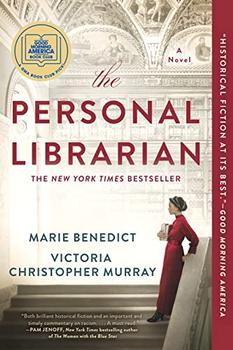
 Book Reviewed by:
Book Reviewed by: